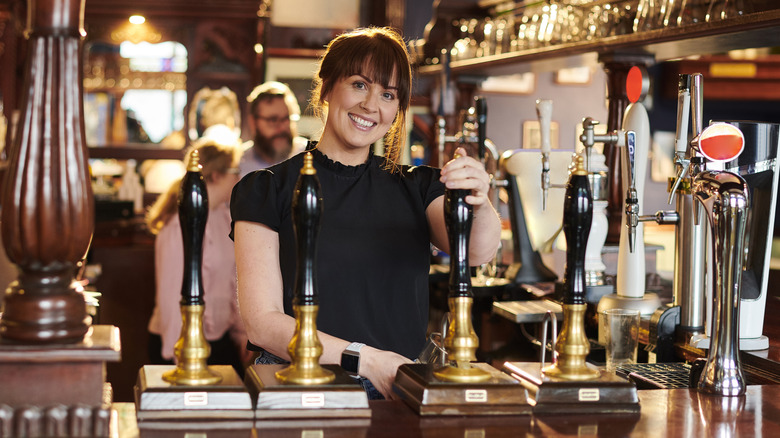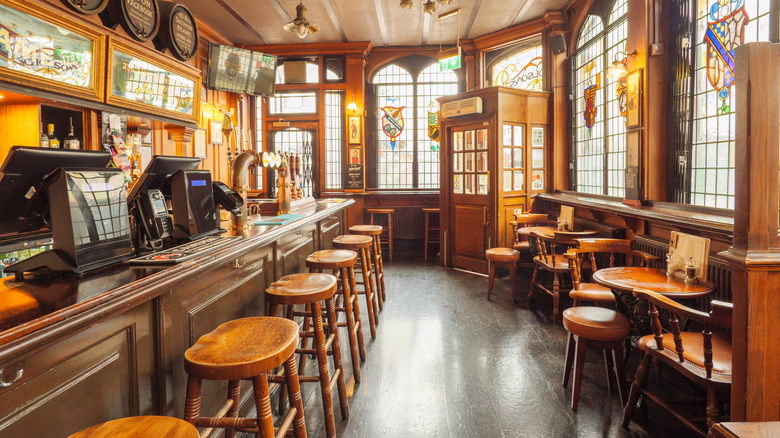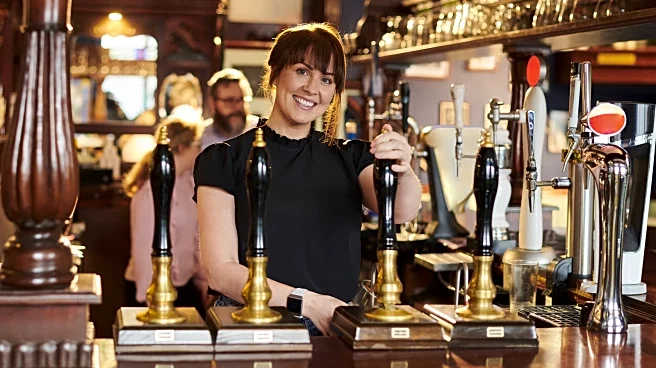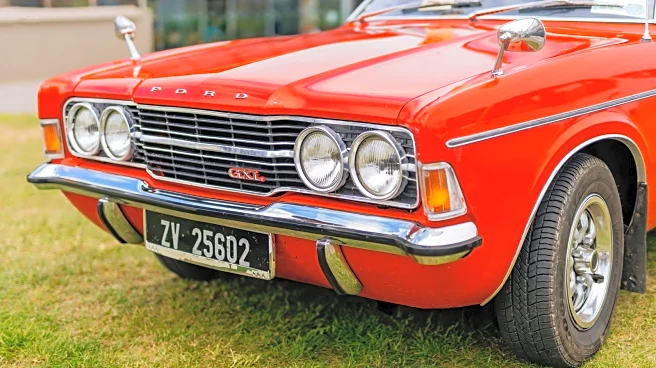
If there's one institution that all Brits can agree characterizes and epitomizes the best that the U.K. has to offer, it's the humble pub. Dim lighting, warm, dark wood, the murmurs of afternoon conversations (or rabid hooting on football nights), and of course, beer. Now, folks who've been to the U.K. or are planning to go may notice that there's usually two types of taps at the bar: short-handled and long-handled (you can see both in the photo above). What's the difference? The short-handled ones
pull all the usual, foamy suspects like Carlsberg and 1664 ("numbers," as you can order it). But as Rick Steves reminds us on his website, it's the long-handled ones that pull legit, "real ale" in the characteristically British style: cask ale fermented directly in the cellar.
Also thought of as a long-pull ale, bartenders pump this cask ale from long-handled taps like they're drawing water from an old well. Each pump sucks up beer from its cask in the cellar, where it's been fermenting at room temperature. This time-honored method produces a richly-flavored, lukewarm ale without the kind of enormous, flowing head that comes from artificial carbonation. While this might take some getting used for folks only used to the mass-produced stuff, connoisseurs and casual beer-lovers alike can consider this ale to be the OG "hand-crafted" brew that many modern, independent breweries claim to make.
As Steves points out, Brits accustomed to long-pulled, cask ales sometimes consider the super cold, frothy stuff to be less satisfying to the point of being bland. And while taste in beer differs dramatically from nation to nation and person to person, those interested in discovering what constitutes "real ale" in the U.K. can keep an eye out for long-handled taps at the pub.
Read more: The Most 'Overtouristed' Places In Europe
Sidle Up To A Bar And Order A Cask Ale

When envisioning traditional cask ale in England or anywhere else across the U.K., the reader will be forgiven for thinking that cask ales are an ancient, millennia-old method of making beer. While it's true that humans have been brewing beer (or at least a version of it) going back at least 10,000 years, cask ales as we know them came about in the 1870s.
Hops began getting added to beer starting in the 1500s through 1600s and helped create beer that kept over longer periods of time. But by the 1800s the public wanted a fresher, milder, lower alcohol content, less hoppy beer. This desire, plus technological advancements, resulted in the modern cask ale of the type you'll find in Brit pubs to this day.
As Rick Steves correctly points out, you can spot these cask ales by their long handles. It takes some muscle to pump up a cask ale and a short handle won't cut it. And no matter that cask ales are generally milder, served room temperature, and have a small head, you can expect the same wealth of flavors and styles from cask ales as any other beer. It might even be good enough to make the ferry ride to the otherwise-inaccessible Old Forge pub in Scotland to have one, two, or more.
For those not up to this journey, our best advice is just to poke around any British city and duck into a pub that looks nice to you. The hidden Vault 1984 under Tower Bridge, London makes for a more unusual experience, but really, any pub is just fine -- and that's the whole point.
Ready to discover more hidden gems and expert travel tips? Subscribe to our free newsletter for access to the world's best-kept travel secrets.
Read the original article on Islands.














